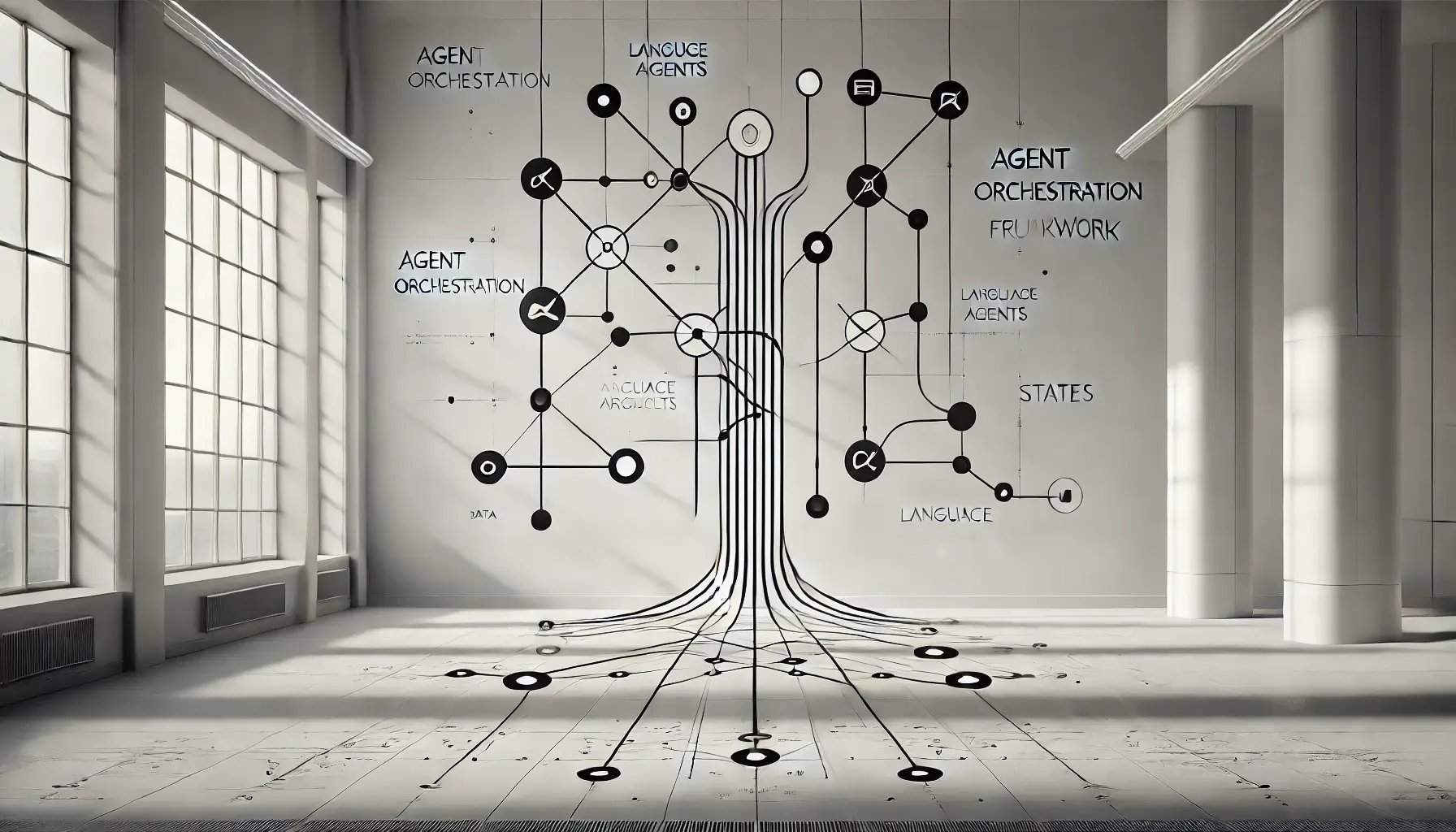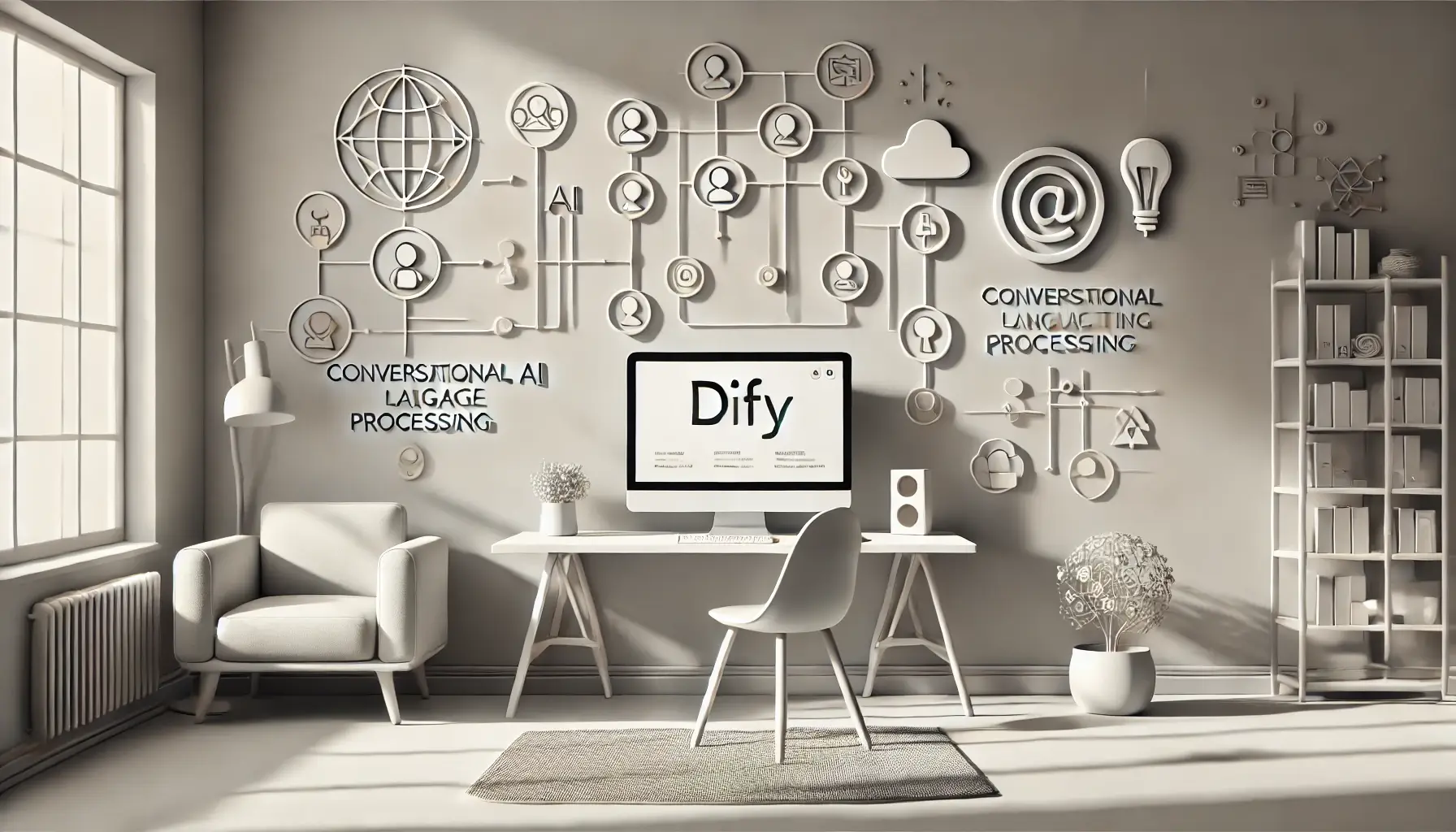
What is an LLM (Large Language Model)?Types, Applications etc
Updated on: by Heysho

In recent years, LLMs (Large Language Models) have become a major focus in the field of AI.
You've likely encountered names like "ChatGPT" and "GPT-4," as these advanced conversational AIs have rapidly integrated into everyday life.
Yet, despite "LLM" appearing frequently in news and social media, many people still wonder: What exactly is an LLM? And how can it be applied to work or personal projects?
This article breaks down the essentials—from what an LLM is and how it works, to the main types, real-world applications, implementation tips, and latest trends—all explained in clear, accessible language.
By the end, you'll have a solid understanding of LLMs and insight into how you might apply them in your organization or personal endeavors.
Table of Contents
- What is an LLM? Understanding the Basic Concepts
- LLM Mechanisms and Technology
- Types and Features of Representative LLMs
- Main Uses of LLMs
- Examples of LLM Use in Business
- Practical Techniques for Utilizing LLMs
- Limitations and Challenges of LLMs
- Latest Trends and Future Prospects for LLMs
- Summary
What is an LLM? Understanding the Basic Concepts
Definition of Large Language Model
An LLM (Large Language Model) is an AI model that learns from vast amounts of text data to understand and generate human language with remarkable accuracy.
By "reading" and processing trillions of words from internet sources, these models can produce text that closely resembles human writing.
What sets LLMs apart is their ability to deeply understand context through significantly larger parameters and training data than conventional language models.
Many models now support multiple languages, including English, Japanese, and many others.
Differences Between Traditional AI and LLMs
- Training Data Scale: LLMs learn from hundreds of billions to trillions of words—equivalent to hundreds of times the text in all of Wikipedia—far surpassing traditional models.
- Versatility: Unlike specialized traditional models, a single LLM can handle diverse tasks like translation, summarization, and question answering without requiring separate systems.
- Contextual Understanding: LLMs excel at grasping nuances in language, easily distinguishing between different meanings of the same word based on context (like "get on a bus" versus "catch a bass").
Why LLMs are Gaining Attention
- Practical Applications: Tools like ChatGPT have made AI accessible for everyday tasks, from drafting emails to summarizing reports.
- Diverse Capabilities: LLMs continue to improve across text generation, code writing, summarization, and translation—even helping programming beginners write functional code.
- Business Impact: Organizations are implementing LLMs to reduce costs and increase efficiency, particularly in customer support where 24-hour AI chatbots complement human staff.
History and Development of LLMs
Language models evolved from RNNs (Recurrent Neural Networks) and LSTMs, but the introduction of the Transformer architecture in 2017 marked a pivotal turning point.
This groundbreaking mechanism efficiently captured relationships between words in text, revolutionizing language processing.
Subsequently, models leveraging massive datasets—like Google's BERT and OpenAI's GPT series—rose to prominence.
Recent years have seen the evolution of true "Large Language Models" with hundreds of billions to trillions of parameters, culminating in user-friendly services like ChatGPT that have brought this technology to the general public.
Mechanisms and Technologies Behind LLMs
Basics of the Transformer Architecture
The core technology powering LLMs is the Transformer architecture, introduced by Google in their groundbreaking 2017 paper "Attention Is All You Need."
This revolutionary technology features:
- Self-Attention Mechanism: This allows the model to weigh the importance of each word in relation to others in a sentence. For example, in "He ate an apple. It was delicious," the model understands that "it" refers to "apple."
- Parallel Processing: Unlike traditional RNNs that process text sequentially, Transformers analyze entire sentences simultaneously, dramatically accelerating training speed.
Pre-training and Fine-tuning
LLM development typically follows a two-stage process:
- Pre-training: The model absorbs massive text corpora to learn fundamental language patterns, vocabulary relationships, and grammar. It learns, for instance, that "cat" and "dog" are animals, or how verbs like "eat" function in different contexts.
- Fine-tuning: The pre-trained model is then specialized for specific domains. For medical applications, it might be further trained on medical literature to master specialized terminology and knowledge.
The Relationship Between Parameter Count and Capability
An LLM's performance correlates strongly with its parameter count (the adjustable values within the model).
As parameters increase, language understanding becomes more sophisticated:
Enhanced Contextual Understanding: While smaller models might grasp simple sentences like "She went to the bank," larger models can understand complex scenarios such as "She took her bankbook to the bank and consulted with the teller about her deposit."
Multi-task Flexibility: A single robust model can handle diverse tasks from translation to summarization and question answering.
However, larger parameter counts require significantly more computational resources, increasing both energy consumption and operational costs.
Training Data and Language Understanding
LLMs learn from diverse text sources including news articles, books, social media, and websites.
This varied diet of information enables them to handle a wide spectrum of expressions and topics across different domains—from casual conversations to technical discussions.
However, this approach comes with challenges. If training data contains biases (political, cultural, or otherwise), the model may perpetuate these biases in its outputs. Similarly, if the training corpus includes inaccurate information, the model might generate incorrect responses.
Major Types and Features of LLMs
OpenAI Models (GPT-3, GPT-4, etc.)
The GPT series by OpenAI represents the cutting edge of LLM technology.
GPT-3.5 and GPT-4 have become widely accessible to the public through ChatGPT, showcasing their sophisticated conversational abilities.
- GPT-3.5: With 175 billion parameters, it handles diverse tasks from creative writing to basic programming with impressive versatility.
- GPT-4: Building on its predecessor, GPT-4 delivers more nuanced, contextually appropriate responses and can tackle complex reasoning tasks with greater accuracy.
Google (Gemini, PaLM, LaMDA, etc.)
Google has developed several powerful LLMs that leverage the company's extensive search and language processing expertise.
These models integrate seamlessly with Google's ecosystem, offering unique capabilities.
- Gemini: Google's most advanced multimodal AI model, released in late 2023, capable of understanding and reasoning across text, images, video, audio, and code. Available in Ultra, Pro, and Nano versions to suit different computational requirements.
- PaLM: A versatile model excelling at multitasking across translation, summarization, and question answering within a single architecture.
- LaMDA: Designed specifically for natural conversation, it creates dialogue that feels remarkably human and contextually aware.
Meta (LLaMA, etc.)
Meta has introduced LLaMA, offering a range of models with varying parameter sizes to suit different needs.
A key advantage is their accessibility for researchers and developers, who can freely use these models for innovation.
The availability of lightweight versions means these models can run on standard personal computers, making advanced AI more accessible for academic research and small-scale projects.
Japanese-Specialized Models (Retrieva, ABEJA, Suruga, etc.)
Several Japanese companies and research institutions have developed LLMs optimized for the Japanese language.
These models excel at capturing the linguistic subtleties and cultural context unique to Japanese.
- Retrieva: Specializes in efficient Japanese document search and summarization, quickly extracting relevant information from large Japanese text collections.
- ABEJA: Offers tailored natural language processing solutions for Japanese businesses, enhancing operational efficiency through AI.
- Suruga: Focuses on Japanese-language chatbots and conversational AI that can navigate the nuances of natural Japanese dialogue.
These specialized models significantly improve accuracy in Japanese language applications by understanding context-specific expressions and cultural references.
Open Source LLMs
Complementing commercial offerings, a growing ecosystem of open source LLMs is democratizing access to this technology.
Platforms like Hugging Face host numerous pre-trained models that are freely available for research and development.
This accessibility enables everyone from students to independent developers to experiment with sophisticated AI models without financial barriers, fostering innovation across the field.
Main Applications of LLMs
Text Generation and Summarization
LLMs excel at generating text for blog articles, essays, and creating concise summaries of longer content.
They can efficiently condense a 3,000-character thesis into a 300-character summary or draft compelling product descriptions.
These models can also organize lengthy texts and automatically produce clear, focused summaries.
Conversational AI and Chatbots
One of the most common applications is conversational chatbots that respond to user queries naturally, similar to ChatGPT.
For example, when asked "What's the weather in Tokyo tomorrow?", the system responds conversationally: "The forecast for Tokyo tomorrow is sunny."
These chatbots are increasingly deployed across customer support, information services, and other interactive platforms.
Content Creation Support
Marketers and writers benefit from LLMs when developing social media content, catchphrases, and product messaging.
A simple prompt like "Give me five tweet ideas about a newly released yogurt" instantly generates creative, usable suggestions.
Beyond idea generation, these tools assist with proofreading and refinement, significantly boosting productivity.
Code Generation and Development Assistance
Tools like GitHub Copilot demonstrate how LLMs can generate code, troubleshoot bugs, and create documentation, streamlining the development process.
Developers can simply request "Write HTML and CSS for a user registration form" and receive functional code immediately.
This capability allows programmers to focus on complex problem-solving and creative aspects of development rather than routine coding tasks.
Data Analysis and Insight Extraction
LLMs can identify key points from large document collections and detect meaningful patterns or trends within data.
For instance, they can analyze 1,000 customer reviews to extract common complaints or suggestions for improvement.
They also power "NLQ (Natural Language Query)" systems, allowing users to query databases using everyday language rather than specialized syntax.
Multilingual Translation and Understanding
LLMs have significantly advanced machine translation capabilities beyond simple word replacement.
They deliver more natural translations by considering cultural context and idiomatic expressions.
For example, when translating the Japanese phrase "彼は頭が切れる" to English, they correctly interpret it as "He is smart" rather than producing a literal but meaningless translation.
Business Use Cases of LLMs
Automation of Customer Support
Companies implementing LLM-powered chatbots can create sophisticated automated response systems that go far beyond basic FAQ handling.
For example, when faced with a vague question like "How do I return an item?", an LLM can intelligently ask, "Which product would you like to return?" before guiding the customer through the specific return process.
This 24/7 support capability significantly enhances customer satisfaction while reducing operational costs.
Efficiency in Marketing and Content Creation
LLMs dramatically streamline content production by semi-automatically generating blog posts, social media content, product descriptions, and marketing copy.
With a simple prompt like "Write an introduction for a summer sunscreen," marketers can instantly generate quality baseline text.
This allows creative professionals to focus on refining and personalizing content rather than starting from scratch, substantially improving productivity.
Accelerating Product and Research Development
Research teams can leverage LLMs to expedite the innovation process from ideation to prototyping through literature analysis, summarization, and code generation.
Researchers can simply request, "Summarize the latest research on hydrogen energy," and receive key insights distilled from hundreds of academic papers.
This capability allows teams to dedicate more time to creative problem-solving and experimentation rather than preliminary research and documentation.
Industry-Specific Use Cases (Finance, Healthcare, Retail, etc.)
- Finance: Automated risk assessment analysis, pattern detection in customer transactions (e.g., "Identify unusual patterns in this client's recent activity")
- Healthcare: Concise medical record summarization, research synthesis (e.g., "Create a one-page summary of this patient's five-year treatment history")
- Retail: Intelligent product recommendation chatbots, sentiment analysis of customer reviews (e.g., "What are the most common complaints about this product?")
Adoption by Japanese Companies
Japanese businesses are increasingly implementing LLMs for enhanced customer engagement and internal efficiency.
For instance, leading e-commerce platforms now offer natural language product search, successfully recommending appropriate items for complex queries like "summer birthday gifts for elementary school boys."
Many corporations have also deployed internal AI assistants that instantly answer employee questions such as "How do I apply for paid leave?", significantly boosting workplace productivity.
Practical Techniques for Utilizing LLMs
Basics of Prompt Engineering
Effective LLM utilization hinges on thoughtful prompt design.
Clearly specifying the question format, desired output parameters, and subject matter substantially improves response quality.
Rather than a vague request like "Tell me about AI," a structured prompt such as "Explain three fundamental AI concepts for beginners, using about 200 characters per concept" yields far more useful results.
How to Give Effective Instructions
- Be Specific: Include concrete parameters, such as "List three product benefits, each within 50 characters"
- Provide Context: Share relevant background information, like "Our company targets health-conscious seniors, so please consider..."
- Iterate Thoughtfully: If the initial response isn't satisfactory, refine with follow-up instructions such as "Please include more concrete examples"
Overview and Methods of Fine-Tuning
When your application requires specialized domain knowledge, fine-tuning the model with additional training can deliver superior results.
For example, a real estate company might adapt the model to express property dimensions as "approximately 60 square meters" rather than using the Japanese-specific "2LDK" format.
- Prepare quality training data: Curate domain-specific Q&As or specialized knowledge documents
- Implement fine-tuning: Utilize platforms like OpenAI or Hugging Face to customize the model
- Evaluate thoroughly: Assess model performance through expert review and comparative testing
Basics of Development Using APIs
Integrating LLMs into your systems typically involves API implementation.
For instance, you can build an intelligent system that automatically categorizes incoming customer inquiries and routes them to the appropriate department.
- OpenAI API: Access GPT-4 or GPT-3.5 for sophisticated text generation and analysis
- Hugging Face API: Leverage diverse open-source models for specialized applications
- Cloud Services: Utilize LLM capabilities through AWS, GCP, Azure, and other major platforms
How to Integrate with Existing Systems
Creating seamless user experiences requires connecting LLMs with your business infrastructure through API integration and webhooks.
For example, an e-commerce chatbot can check real-time inventory when asked "Is this product in stock?" by connecting directly to your database.
These integrations enable contextually rich interactions—from inventory verification to personalized recommendations—significantly enhancing customer experience and operational efficiency.
Limitations and Challenges of LLMs
The Problem of Hallucination
LLMs sometimes generate incorrect or fabricated information (hallucination) when inferring answers from context.
For instance, when asked about recent events like "Who won the Nobel Prize in Literature in 2023?", the model might confidently provide an incorrect name.
For critical information needs, implementing human verification processes and fact-checking protocols is essential.
Bias and Ethical Issues
Biases and discriminatory patterns present in training data can manifest in the model's responses.
When prompted to describe "an excellent doctor," for example, the model might unconsciously default to male-coded language or assumptions.
Organizations must continuously monitor and refine these models to prevent perpetuating harmful stereotypes.
Data Privacy Concerns
User-submitted confidential or personal information may inadvertently influence the model's training or appear in responses to other queries.
When an LLM summarizes internal documents, there's a risk that sensitive content could leak into unrelated responses.
Implementing robust privacy frameworks and data handling protocols is crucial to mitigate information security risks.
Computational Costs and Environmental Impact
Training and operating large-parameter LLMs demands substantial computational resources.
The development of models like GPT-4 reportedly required thousands of GPUs and incurred millions in electricity costs.
This intensive resource consumption raises significant environmental sustainability concerns.
Legal and Copyright Issues
LLM-generated content may potentially infringe on copyrights or expose confidential information.
Content that closely mimics a distinctive writing style could create legal complications.
Staying informed about evolving legislation and precedents regarding AI-generated content and data usage is increasingly important.
Latest Trends and Future Outlook of LLMs
Advancements in Multimodal LLMs
"Multimodal" LLMs that process images, audio, and video alongside text are gaining significant traction.
These models can perform complex tasks like analyzing a food photo and suggesting a recipe when asked "How do I make this dish?"
This technology is creating more intuitive and versatile AI assistants.
Research on Smaller and More Efficient LLMs
The focus is shifting from larger models toward more efficient learning and inference capabilities.
Compact models that run directly on smartphones now enable offline question-answering without internet connectivity.
Edge AI applications and mobile integration represent key development frontiers.
Advances in Japanese Language Support
Japanese language processing has historically presented challenges due to its distinct grammar and writing systems.
Recent developments, including specialized models like "Rinna" and "Calm2" and increased investment from Japanese companies, have led to substantial improvements in Japanese language capabilities.
These advances are making LLMs increasingly practical for natural Japanese conversation and document creation.
The Rise of Domain-Specific LLMs
Field-specialized models for medicine, law, finance, and other domains are proliferating.
A medical LLM can provide more precise responses to symptom-based queries than general-purpose alternatives.
These specialized models with enhanced accuracy are finding growing adoption in professional settings.
Future Predictions and Technical Challenges
LLM evolution continues through both scale increases and architectural innovations.
Improvements in areas where current models struggle—like long-term memory and logical reasoning—will enable more complex problem-solving capabilities.
Significant challenges remain, including resource requirements, data quality concerns, privacy protections, and ethical considerations.
Addressing these issues will facilitate safer, more reliable LLM integration throughout society.
Summary
LLMs (Large Language Models) are AI systems trained on vast text datasets to understand and generate natural language, now widely accessible through interfaces like ChatGPT.
Transformer architecture and self-attention mechanisms have dramatically improved contextual understanding, enabling diverse applications from question answering to translation and summarization.
In business contexts, LLMs enhance productivity through chatbots, content creation, data analysis, and code generation.
However, challenges including hallucinations, bias, and privacy concerns necessitate thoughtful risk management during implementation.
Looking forward, multimodal capabilities and domain-specific models will continue to advance, with ongoing improvements in Japanese language processing. Given the rapid pace of innovation, staying current with emerging developments remains essential.




